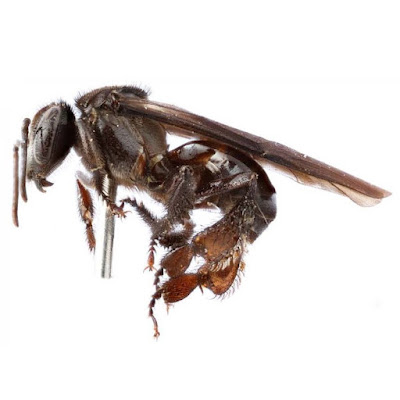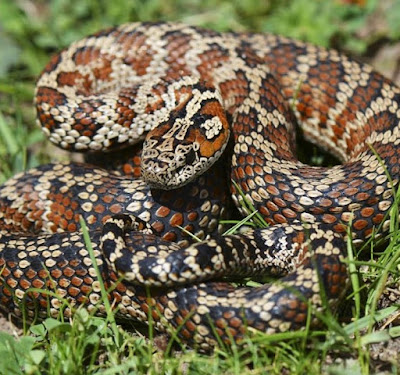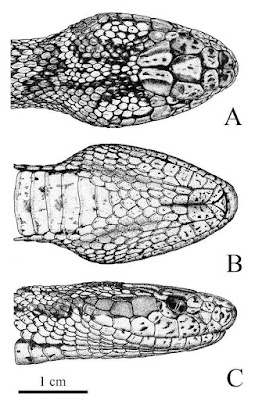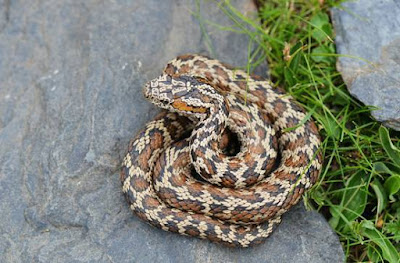[Most Recent Entries] [Calendar View]
Saturday, December 23rd, 2017
| Time | Event | ||||
| 8:08a | [Entomology • 2017] Wallacetrigona incisa • A New Genus of Eastern Hemisphere Stingless Bees (Hymenoptera, Apidae), with A Key to the Supraspecific Groups of Indomalayan and Australasian Meliponini
A new genus of stingless bees (Apinae: Meliponini) is described and figured from Indonesia (Sulawesi), known from a single species previously placed in Geniotrigona Moure. Based on recent phylogenetic studies, Trigona (Geniotrigona) incisa Sakagami and Inoue renders Geniotrigona polyphyletic and is more closely related to Lepidotrigona Moure. The species is transferred to Wallacetrigona Engel and Rasmussen, new genus, and differentiated from Geniotrigona proper as well as all other meliponines occurring in Sundaland, Wallacea, and Sahul (Australinea). The new genus occurs east of the Wallace Line and separate from the distribution of Geniotrigona, which is otherwise restricted to Sundaland, but Wallacetrigona is presently not known beyond the Weber Line. A hierarchical classification of Indomalayan and Australasian stingless bees is tabulated and a revised key to the genera and subgenera provided, as well as an appendix tabulating the species and synonyms. The following new combinations are established: Wallacetrigona incisa (Sakagami and Inoue), Homotrigona (Lophotrigona) canifrons (Smith), Homotrigona (Odontotrigona) haematoptera (Cockerell), Homotrigona (Tetrigona) apicalis (Smith), H. (T.) binghami (Schwarz), H. (T.) melanoleuca (Cockerell), H. (T.) peninsularis (Cockerell), and H. (T.) vidua (Lepeletier de Saint Fargeau).
SYSTEMATICS Tribe Meliponini Lepeletier de Saint Fargeau Wallacetrigona Engel and Rasmussen, new genus Wallacetrigona incisa (Sakagami and Inoue), new combination Trigona (Geniotrigona) incisa Sakagami and Inoue, 1989: 605. Geniotrigona incisa (Sakagami and Inoue); Rasmussen, 2008: 11. Etymology: The generic name honors Alfred Russel Wallace (1823–1913), an intrepid and early explorer of the Indomalayan insect fauna and coauthor with Charles R. Darwin (1809– 1882) of the theory of evolution. The gender of the name is feminine. Claus Rasmussen, Jennifer C. Thomas and Michael S. Engel. 2017. A New Genus of Eastern Hemisphere Stingless Bees (Hymenoptera, Apidae), with A Key to the Supraspecific Groups of Indomalayan and Australasian Meliponini. American Museum Novitates. no. 3888. http://digitallibrary.amnh.org/handle/22 | ||||
| 5:41p | [Herpetology • 2017] Gloydius rubromaculatus • A New Moth-preying Alpine Pit Viper Species (Viperidae, Crotalinae) from Qinghai-Tibetan Plateau
Abstract The Sanjiangyuan region of Qinghai-Tibetan Plateau is recognized as a biodiversity hotspot of alpine mammals but a barren area in terms of amphibians and reptiles. Here, we describe a new pit viper species, Gloydius rubromaculatus sp. n. Shi, Li and Liu, 2017 that was discovered in this region, with a brief taxonomic revision of the genus Gloydius. The new species can be distinguished from the other congeneric species by the following characteristics: cardinal crossbands on the back, indistinct canthus rostralis, glossy dorsal scales, colubrid-like oval head shape, irregular small black spots on the head scales, black eyes and high altitude distribution (3300-4770 m above sea level). The mitochondrial phylogenetic reconstruction supported the validity of the new species and furthermore reaffirms that G. intermedius changdaoensis, G. halys cognatus, G. h. caraganus and G. h. stejnegeri should be elevated as full species. Gloydius rubromaculatus sp. n. was found to be insectivorous: preying on moths (Lepidoptera, Noctuidae, Sideridis sp.) in the wild. This unusual diet may be one of the key factors to the survival of this species in such a harsh alpine environment. Keywords: new species; Sanjiangyuan region; insectivorous; Gloydius rubromaculatus sp. n. Jingsong Shi, Gang Wang, Xi’er Chen, Yihao Fang, Li Ding, Song Huang, Mian Hou, Jun Liu and Pipeng Li. 2017. A New Moth-preying Alpine Pit Viper Species from Qinghai-Tibetan Plateau (Viperidae, Crotalinae). Amphibia-Reptilia. 38(4); 517 – 532. DOI: 10.1163/15685381-00003134 |
| << Previous Day |
2017/12/23 [Calendar] |
Next Day >> |








